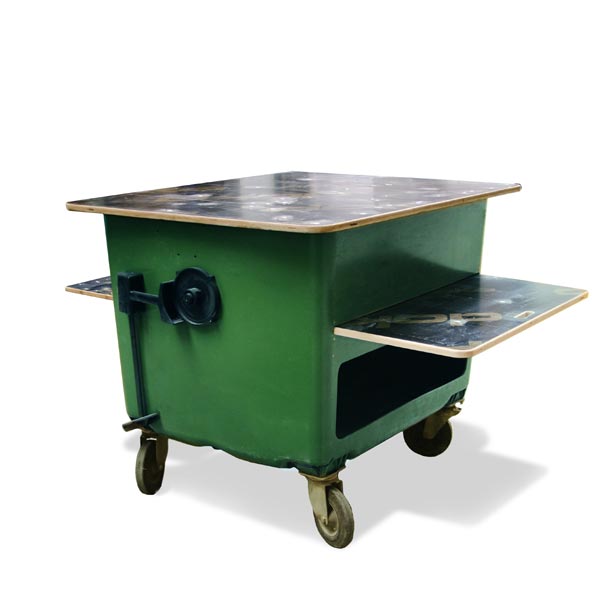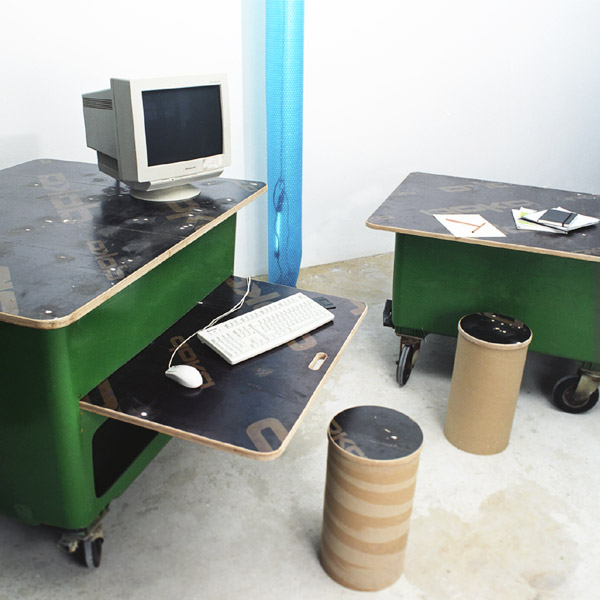
re:flex by irwin pulanco from germany
designer's own words:
This worktable is composed of a retired waste container and concrete forming sheets. The waste container offers a roll-able platform with a large PE-shell, foot-brake, and was retired because of cracks in the floor of the shell, which is irrelevant for this use. The concrete forming sheets are plastic-coated laminated wood boards that were cleaned and touched up. Therefore, the table surface maintains a non-homogenous character with patina qualities. The table has 2 tabletops that can be pulled out of the container on both sides, so that it is possible to work while sitting or standing. Above the sliding tabletops is a hidden storage space that can be accessed by lifting the main tabletop, and under the sliding tabletops is an easy access storage space. Furthermore, thanks to the wheels, it is easy to transport and rearrange.
STATEMENT
In our opinion, the term “waste” is a linguistic invention of consumer society used to describe a material or form that either no longer fulfills its original purpose due to damage (a broken pen), arises as an unintended result of a manufacturing process (gypsum), or was designed with a limited lifespan in mind (bottle cap).
We approach waste at this very fragile linguistic moment – a moment full of promise, a moment where it is possible to examine the true qualities of the materials and forms by finding new applications for these inherited by-products of the industrial megalith.
We don’t expect to completely and permanently solve the world’s waste issues, however we do feel obliged to approach design with that nagging question in mind: how do we get rid of it?
In our opinion, designers and product developers need to consider the afterlife of the objects they create, which doesn’t imply alternative, improvised or moralistic solutions, rather premium, cost-effective, aesthetic products that are sustainable. (Because we know that industry and society will continue making waste.)
3/4 view
 in the office
in the office